1. Termite behavior
Some termite behaviors can be exploited to improve current control methods. For example, in one of recent project carried by a graduate student (Nick Poulos), we investigated the behavioral effect of two volatile terpenes, α-pinene and β-pinene, on a drywood termite species. In an artificial wooden gallery arena, western drywood termites (Incisitermes minor) were attracted to the site that was treated with a small amount of these chemicals. When tested with the pesticide product containing fipronil, β-pinene significantly accelerated the time course of mortality in western drywood termite. This type of finding can be used to improve the local treatment option with some insecticides.
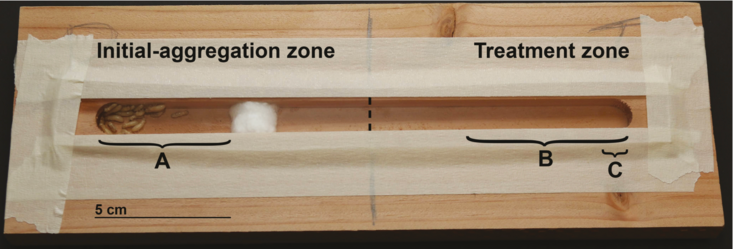
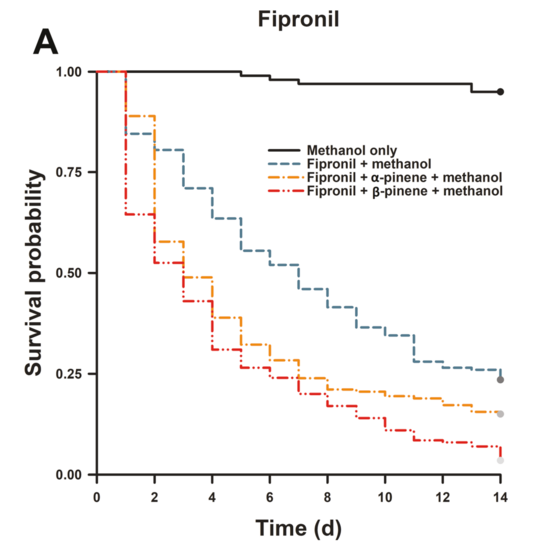
To learn about this study, click here.
2. Termite control methods
In a recent research project conducted by a graduate student (Daniel Perry), we have investigated the use of volatile essential oil compounds as an "added" treatment option for heat treatments targeting western drywood termites, Incisitermes minor (Hagen).
Use of heated air to create lethal temperatures within infested wood serves as a nonchemical treatment option against drywood termites. When treating a whole or large portion of the structure, however, the presence of hard-to-heat areas (structural heat sinks) and potential risk of damaging heat-sensitive items are recognized as important challenges. To address these challenges, we tested if the incorporation of a volatile essential oil would increase the overall efficacy of heat treatments against the drywood termites.
As a proof-of-concept experiment, field-collected termites were housed in small wooden arenas and subsequently subjected to 2-h heat treatment at various air temperatures within a gas chromatography oven. A simulated heat sink and essential oil treatment was also included in the experimental design.
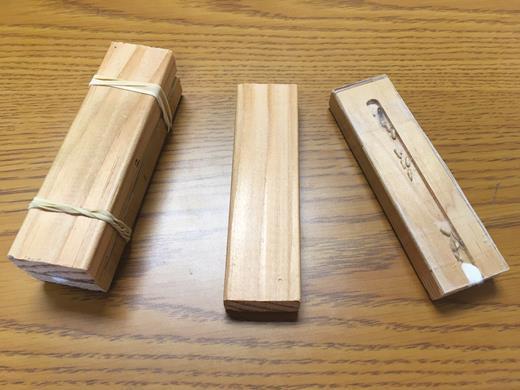
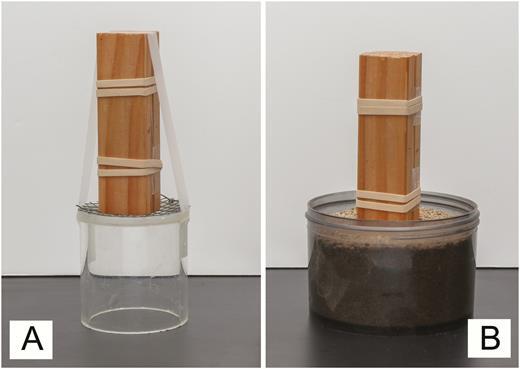
Our findings suggested that 1) the presence of a heat sink significantly increased the minimum air temperature needed for complete kill of the termites and 2) the volatile essential oil added at the site of a heat sink effectively counteracted the impact of the heat sink.
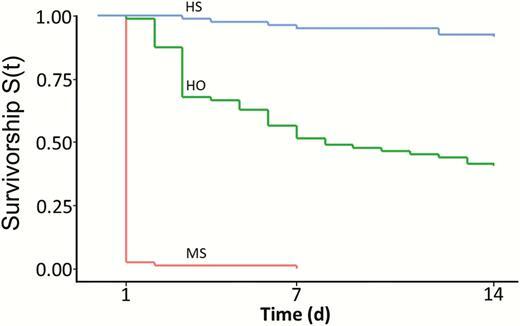
In the survivorship curves above, comparison between HO and HS indicates that structural heat sinks shield termites from heat treatments. Comparison between HS and MS indicates that the addition of MS at the site of a heat sink can effectively counteract the insulative nature of the structural heat sink.
To learn about this study, click here.
Recently, we explored the use of chitin synthesis inhibitors (CSIs) to control western drywood termites. In the series of laboratory experiments (no-choice, choice, and transfer study), we tested three different benzoylureas (BPUs) against pseudergates of western drywood termites. The findings suggest that bistrifluron was most effective in providing the control of drywood termites, and ingested bistrifluron was effectively transferred from one termites to several other recipient termites. CSIs have been successfully used for subterranean termite baiting, and we see some great potentials in this particular group of compounds to be used in the future development of more localized and targeted management techniques for drywood termites.
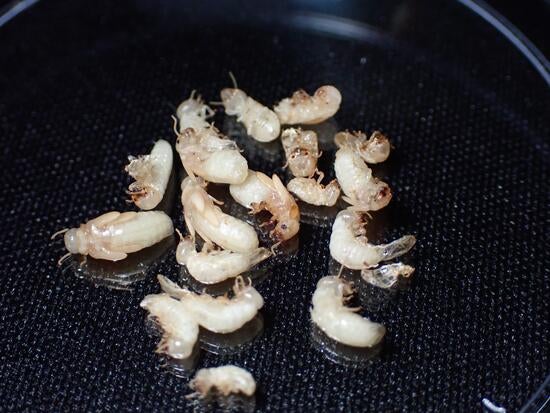
To learn about this study, click here.
3. Termite detection
We study termite detection.
4. Termite IPM
We study termite IPM.
5. Termite biology

Due to their cryptic lifestyle and relatively slow developmental cycle, many aspects of drywood termite biology are not well known. This is true even for western drywood termite, which is one of the most important drywood termite species of structural significance. Recently, some of the less known aspects of their biology (egg development, egg hatching, and proctodeal trophallaxis) have been filmed and photographed, and three short videos are created to be used as educational material for students and professionals in termite biology and management. Click here for more information.
